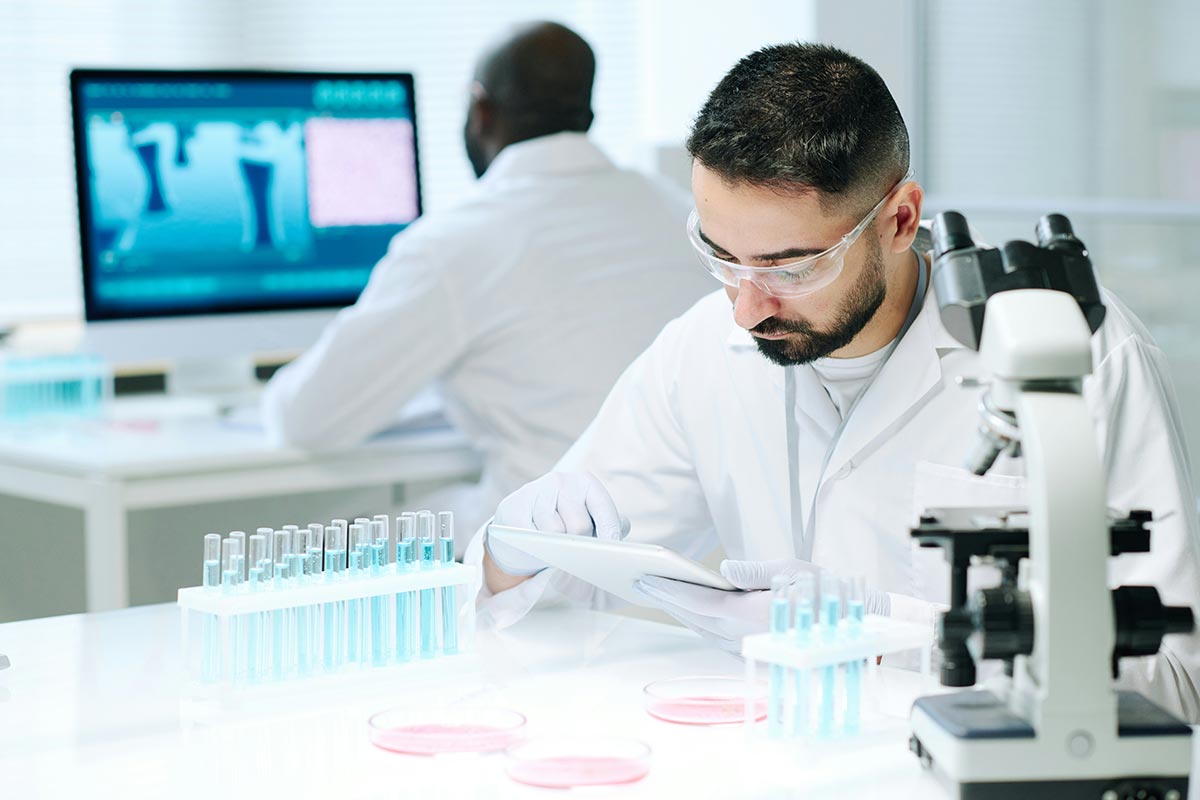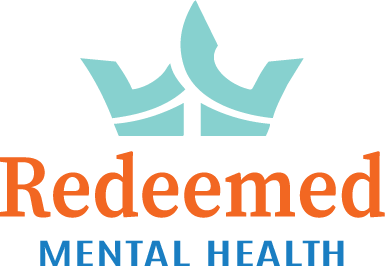Emerging Technologies in Mental Health Treatment
![]() Redeemed Mental Health
on
August 15, 2024
Redeemed Mental Health
on
August 15, 2024
 Technology has driven mental health treatment since the early days of treatment – with some early devices like EEG readings still in use in some treatments. Today, technology drives our culture and how society functions, with internet, video calling, and artificial intelligence all driving change. That also impacts mental healthcare and treatment, including how treatment is delivered, types of treatment, diagnosis, and much more.
Technology has driven mental health treatment since the early days of treatment – with some early devices like EEG readings still in use in some treatments. Today, technology drives our culture and how society functions, with internet, video calling, and artificial intelligence all driving change. That also impacts mental healthcare and treatment, including how treatment is delivered, types of treatment, diagnosis, and much more.
Many of those interventions make treatment more accessible, more affordable, and more accurate. They also range from mobile apps to predictive analytics, with many steps in between. In this article, we’ll review some of the emerging technologies in mental health treatment and how they impact treatment.
Teletherapy and Telepsychiatry
Telehealth or virtual health typically means delivering mental healthcare via a phone or video call. That can also mean chat with mental healthcare sessions via video calls, phone, and even on messenger apps. This delivery method makes healthcare more accessible, reduces concerns surrounding mobility and affordability, and means that even very busy people with responsibilities can access mental healthcare. Telehealth has increased in prominence, especially following the Covid19 pandemic, when video calls and platforms enabled many people to continue receiving treatment. Today, it’s considered a good second-line treatment or follow-up to in-person treatment and may be used as primary care for individuals with lighter needs.
This can include software-based interventions for behavioral treatment. Here, telehealth is delivered as part of an app that delivers diverse treatment including behavioral health programs.
Mobile Health (mHealth) Apps
Mental health apps are increasingly popular because they allow cost-effective and accessible care to a large number of people. Here, people use apps for self-care, routine tracking, behavioral therapy, mood tracking, stress management, anger management, and more. Apps have pros in that they are accessible and offer a low level of care and support to a large number of people. They can also monitor symptoms and progression and, with a mental health expert on call for monitoring patients, can help keep patients on track. However, they don’t offer a high level of care and without monitoring and follow-up, are easy to drop.
These digital therapeutics are also increasingly FDA approved, with some digital or software interventions being approved as primary treatment. Here, you typically receive a behavioral health program with homework which you follow through the app – with monitoring by a therapist and potentially sessions with the therapist as well.
Machine Learning
 Machine learning, commonly referred to as artificial intelligence, is more and more often integrated into mental healthcare. Here, algorithms are used as chatbots, with the option to provide 24/7 support at a low level and to escalate cases to people as needed. AI also provides predictive analytics, which enable monitoring patients after graduating from programs, monitoring app usage, and implementing early intervention programs. For example, Facebook has an algorithm that detects users who are potentially at risk of suicide and flags them for contact and engagement. These kinds of AI are increasingly trained in workplaces, hospitals, and aftercare scenarios, where they allow medical professionals to better process data and respond to it, because data is analyzed, and risks are flagged for manual review.
Machine learning, commonly referred to as artificial intelligence, is more and more often integrated into mental healthcare. Here, algorithms are used as chatbots, with the option to provide 24/7 support at a low level and to escalate cases to people as needed. AI also provides predictive analytics, which enable monitoring patients after graduating from programs, monitoring app usage, and implementing early intervention programs. For example, Facebook has an algorithm that detects users who are potentially at risk of suicide and flags them for contact and engagement. These kinds of AI are increasingly trained in workplaces, hospitals, and aftercare scenarios, where they allow medical professionals to better process data and respond to it, because data is analyzed, and risks are flagged for manual review.
Machine learning can also be used to deliver targeted and personalized treatment plans because AI can more easily compare individual symptoms and test results to previous patients to look at what performed well. That can help to improve the efficacy of treatment – although many providers don’t yet have the data on record to provide this kind of care.
Virtual Reality (VR) and Augmented Reality (AR)
Virtual reality and augmented reality are two technologies which are increasingly being used in therapy sessions. Here, users wear devices like Meta Quest to experience environments and visuals without having to be present in them. This is used to create controlled environments for exposure therapy so patients can confront fear and anxiety in a safe space. It’s also used for relaxation, mindfulness, guided therapy sessions, etc., which users can undergo from their own home.
Wearable Devices
Wearable devices like smartwatches, heart and sleep trackers, and activity trackers are increasingly popular in mental health. However, they are for the most part aligned with mental health apps and tracking. Here, biometric tracking and monitoring means that therapists don’t have to rely on patients inputting data. Instead, the tracker automatically inputs it for them – reducing chances of avoidance and faking data. Trackers can also share alerts about stress and anxiety levels, giving therapists better insight into their patient’s wellbeing.
That extends to neurofeedback and brain stimulation, where neurofeedback wearables are used in sessions to offer self-regulation of brain function. In neurofeedback sessions, individuals often see representations of brainwaves on screen and are able to learn how reaction, behavior, and thought patterns impact that. Other therapies like Transcranial Magnetic Stimulation or TMS use similar approaches but with magnetic pulses to actively impact brain function. The difference is that the latter two therapies are only delivered in clinics and biometric devices are typically worn 24/7.
Genetic Testing and Personalized Medicine
 Modern medicine increasingly points out that everything from behavioral responses to addiction are partially determined by genetics. This means that genetic testing is increasingly viable as part of treatment, where it is used to inform treatment plans. That includes identifying and managing vulnerabilities, identifying potential reactions to specific interventions and medications, and creating more effective individual treatment strategies.
Modern medicine increasingly points out that everything from behavioral responses to addiction are partially determined by genetics. This means that genetic testing is increasingly viable as part of treatment, where it is used to inform treatment plans. That includes identifying and managing vulnerabilities, identifying potential reactions to specific interventions and medications, and creating more effective individual treatment strategies.
Genetic testing is not yet widespread but as our understanding of the impact of genetics on medication and behavioral responses grows, it will be more and more common in mental health treatment.
Genetic testing is currently being used to inform patients about what genetic mental health conditions may impact them – which allows them to invest in proactive treatment and mitigation measures. For example, patients with a family history of depression can implement lifestyle interventions proactively while people with a history of schizophrenia can ensure that they have check-ins and safety measures in case they experience episodes, so they get treatment and medication as soon as they start to show symptoms.
Backend Technologies
While most patients will never see it, technologies like blockchain and IOT are increasingly used in mental healthcare. For example, blockchain integrates to offer increased security and privacy for data records, enabling more secure sharing, and giving patients better control over their data. IOT means devices automatically share data, so, for example, trackers automatically upload data, saving you the hassle of doing it yourself. In each case, you get a smoother and more informed approach to mental healthcare, even if you rarely see the actual technology at work.
Conclusion
New technologies will continue to arise and change the mental healthcare market. Today, most changes involve digitization, in which the availability and delivery of healthcare is increasingly moved online. This enhances accessibility. Other innovations improve personalization and hopefully effectiveness, such as genetic analysis and using AI to diagnose and predict better potential treatments.
Eventually, technology will always revolutionize mental healthcare. Whether that’s by enabling online therapy sessions, ensuring you can access behavioral therapy programs with an app, or giving you tools to talk to a chatbot and ask for help 24/7 doesn’t matter. Hopefully, these innovations make it easier, more accessible, and more affordable to reach out for help and to get the care you need.





















